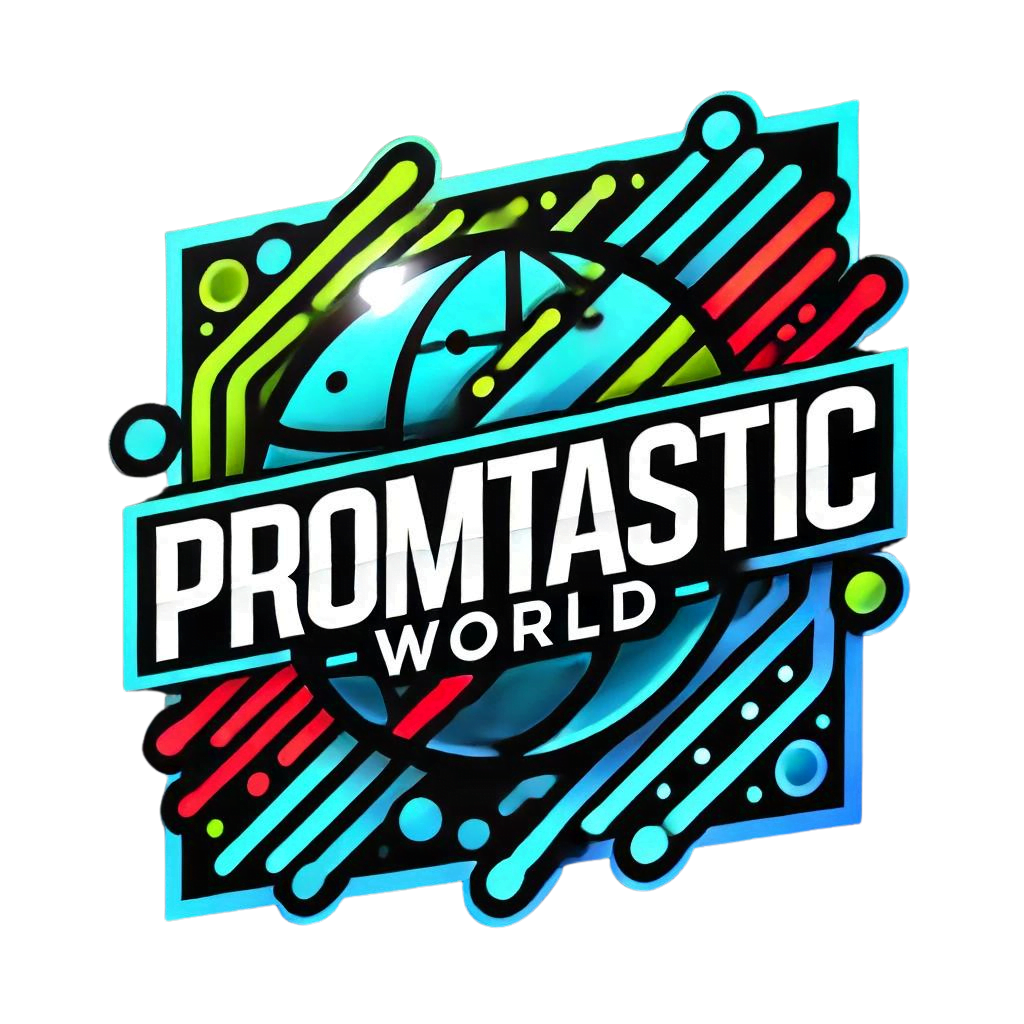Unlocking ChatGPT’s Potential: How to Write Effective Prompts
June 24, 2024 | by Mr Promtastic

Understanding the Basics: How to Create Prompts for ChatGPT
Welcome to the world of ChatGPT, a transformative AI technology that engages in human-like conversations based on the prompts you provide. Understanding how to create prompts for ChatGPT is essential for unlocking its full potential. Whether you’re a tech enthusiast, a developer, or a creative professional, mastering the art of prompt creation can significantly improve the quality of responses you get from ChatGPT.
Creating the right prompts is crucial because they guide the AI’s responses, ensuring they are relevant, accurate, and engaging. In this section, we will cover the fundamental principles for structuring your prompts, helping you to create prompts for ChatGPT more effectively.
Introduction to ChatGPT and its Capabilities
ChatGPT, powered by advanced natural language processing algorithms, can understand and generate human-like text. It excels in a variety of applications, from drafting emails to writing complex narratives. By creating well-structured prompts, you can direct ChatGPT to produce detailed explanations, creative stories, engaging dialogues, and much more.
The Importance of Creating the Right Prompts
The effectiveness of ChatGPT relies heavily on the quality of the prompts provided. Well-designed prompts can lead to insightful and helpful responses, while poorly constructed prompts might yield vague or unhelpful outputs. Learning to create prompts for ChatGPT effectively is the key to harnessing its capabilities for your specific needs.
Key Principles for Structuring Your Prompts
When creating prompts for ChatGPT, clarity, brevity, and context are paramount. Your prompts should be clear enough to communicate your intent, concise to avoid unnecessary confusion, and provide sufficient context to guide the AI. By adhering to these principles, you can create prompts that elicit the most appropriate and informative responses from ChatGPT.
Understanding the Basics: How to Create Prompts for ChatGPT
Introduction to ChatGPT and its Capabilities
ChatGPT, powered by OpenAI, is a revolutionary natural language processing (NLP) model that has taken the technological world by storm. Harnessing the power of generative algorithms, it can effortlessly produce human-like text, making it an invaluable tool for a myriad of applications—from content creation to customer service. Its ability to comprehend context, manage dialogues, and generate coherent responses is truly unparalleled.
As an innovator, your ability to create effective prompts for ChatGPT significantly impacts the quality of responses you obtain. Crafting well-structured prompts is an art that combines the precision of technical expertise with the flair of creative writing. Whether you’re a novice or a seasoned expert, mastering this skill is essential for unlocking the full potential of ChatGPT.
Importance of Creating the Right Prompts for Better Responses
Imagine ChatGPT as a highly sophisticated orchestra, and your prompt is the conductor’s baton. A well-crafted prompt can elevate the dialogue, producing harmonious, coherent, and impactful outputs. Conversely, a poorly-formed prompt might result in discordant, irrelevant, or superficial responses.
The right prompt acts as a guiding star, steering the AI in the desired direction while granting it the creative freedom to shine. The art of prompt creation lies in striking a balance between providing clear instructions and allowing room for the model’s ingenuity. By investing time and thought into crafting optimal prompts, you increase the likelihood of obtaining relevant, accurate, and engaging responses, ultimately enhancing user satisfaction and achieving your communicative goals.
Key Principles for Structuring Your Prompts
1. Clarity and Precision
When creating prompts for ChatGPT, clarity is paramount. Ambiguous or vague prompts can lead to misunderstood contexts and subpar results. Aim to craft prompts that eliminate confusion and provide a clear path for the model to follow. For instance:
Less Effective: Tell me about technology.
More Effective: Explain the impact of artificial intelligence on modern healthcare.
2. Contextual Anchoring
Providing sufficient context within your prompt helps ChatGPT generate responses that are aligned with your expectations. The more specific and contextual information you offer, the better the model can tailor its outputs. Contextual prompts can help it grasp the nuances of the requested information. For example:
Less Effective: What are the benefits of this?
More Effective: What are the benefits of integrating renewable energy sources into urban infrastructure?
3. Conversational Framing
Framing your prompt in a conversational manner can make the interaction feel more natural and engaging. Use a tone that resonates with your audience and encourages an open dialogue. For example, instead of issuing a command, consider phrasing your prompt in the form of a question or request:
Less Effective: List the reasons for climate change.
More Effective: Could you explain the key factors contributing to climate change?
4. Inclusivity of Examples
Incorporating examples in your prompts can serve as effective anchors, guiding ChatGPT to deliver more relevant responses. Examples not only clarify your intentions but also provide a blueprint that the AI can model its output on. For instance:
Less Effective: Describe a new gadget.
More Effective: Imagine you are a product designer. Describe a new gadget that solves the problem of excessive screen time. Include its features and how it benefits users.
5. Balance Between Specificity and Flexibility
Achieving an optimal balance between specificity and flexibility enables ChatGPT to provide detailed responses while exercising its creative capabilities. Specifying your requirements keeps the AI on track, while a degree of openness allows it to explore innovative angles. For example:
Less Effective: Write a short story.
More Effective: Draft a short science fiction story set in the year 2100, focusing on the theme of human-AI coexistence. Highlight the benefits and challenges of this relationship.
In summary, creating effective prompts for ChatGPT involves a careful blend of clarity, contextual anchoring, conversational framing, inclusivity of examples, and an equilibrium between specificity and flexibility. As you become adept at these principles, you’ll unlock the full potential of ChatGPT, transforming it from merely a tool to a dynamic collaborator in your creative endeavors. The next step involves diving deeper into specific techniques and strategies to further refine and elevate the quality of your prompts.
“`
Tips and Strategies: Crafting High-Quality Prompts for ChatGPT
Creating effective prompts for ChatGPT isn’t just about stringing words together. It’s about precision, clarity, and understanding the nuances that drive AI responses. Here, we’ll explore key strategies for crafting impactful prompts that ensure ChatGPT offers the most relevant and high-quality responses.
Specific Techniques for Making Prompts Clear and Concise
First and foremost, clarity is paramount. A well-structured prompt provides all the necessary information up front, minimizing ambiguity. Here are some techniques to ensure clarity and conciseness:
Be Specific: The more specific your prompt, the better ChatGPT can understand and respond. For example:
- General Prompt: Tell me about space.
- Specific Prompt: Explain the formation of black holes in space.
Use Simple Language: Avoid complex jargon unless it’s essential to the context. ChatGPT can handle sophisticated queries, but a straightforward approach often yields clearer responses:
- Complex Prompt: Provide a detailed exegesis of ontological arguments.
- Simple Prompt: Explain the main ideas behind ontological arguments in philosophy.
Get to the Point: Long-winded prompts can confuse the model. Aim to distill the essence of your query:
- Long-Winded Prompt: In the context of global economic activities and historical trade practices, could you elaborate on the significance of the Silk Road?
- Concise Prompt: What was the significance of the Silk Road in history?
How to Use Context and Examples Effectively
Providing context can significantly enhance the quality of ChatGPT’s responses. Here’s how to leverage context and examples:
Set the Scene: Briefly outline the context to narrow down the focus:
- Prompt Without Context: Describe the impact of new technology.
- Prompt With Context: Describe the impact of blockchain technology on financial markets.
Use Examples: When questions are complex or multifaceted, examples can guide the AI toward the desired response:
- Prompt Without Example: How do fusion and fission differ?
- Prompt With Example: How do fusion and fission differ, like in the way the sun and nuclear reactors work?
Incorporate Scenarios: Hypothetical scenarios help frame the situation, allowing ChatGPT to generate more nuanced answers:
- General Prompt: What should I do if an employee is underperforming?
- Scenario-Based Prompt: If an employee in a tech startup is consistently missing deadlines, what steps should I take to address their performance issues?
Avoiding Common Pitfalls and Ensuring Prompt Relevance
Even well-intentioned prompts can fall short if they lack clarity or relevance. Here’s how to avoid common pitfalls:
Stay Away from Overly Broad Prompts: Broad prompts can lead to vague and unhelpful responses:
- Overly Broad Prompt: Tell me about history.
- Focused Prompt: Discuss the key events of the American Civil War.
Avoid Leading Questions: Leading questions can bias the response, steering it in a particular direction:
- Leading Question: Don’t you think renewable energy is the only solution to climate change?
- Neutral Question: What are the potential solutions to climate change, including renewable energy options?
Check for Relevance: Ensure your prompt is directly related to the information you want. Irrelevant details can confuse the model:
- Irrelevant Details Prompt: Given that I have a golden retriever and I’m looking for career advice, what should I do next?
- Relevant Prompt: What are the key factors to consider when planning a career change?
Final Thoughts on Crafting High-Quality Prompts
Creating effective prompts for ChatGPT requires a blend of precision, clarity, and contextual understanding. By being specific, using simple language, and providing relevant context, you can significantly enhance the quality of responses. Avoid broad, leading, or irrelevant questions to keep the focus sharp and the responses useful. As you practice these techniques, you’ll find that your ability to generate high-quality prompts—and thus, high-quality AI interactions—will exponentially improve.
“`
Advanced Techniques: Enhancing Engagement with Creative Prompts
Experimenting with Tone and Style for Varied Outputs
To create prompts for ChatGPT that truly captivate and engage, it’s essential to experiment with different tones and styles. Just as a painter uses various brushes to bring a canvas to life, diversifying your approach in prompt creation can result in richer, more vivid AI responses.
Consider this example: Imagine you are a product designer. Create a concept for an innovative gadget that solves a common problem. This prompt is straightforward and clear, but now let’s infuse it with some style:
As a visionary product designer standing on the cusp of innovation, what groundbreaking gadget would you create to tackle a ubiquitous problem that plagues our daily lives?
Notice the heightened engagement through a more evocative tone. This approach can spark not only more creative responses but also more elaborate and thoughtful ones.
Utilizing Follow-Up Questions to Refine ChatGPT’s Responses
Once you’ve created an initial prompt, refining the interaction with follow-up questions can be a game-changer. Think of it like sculpting clay; each follow-up question allows you to mold the response further, chiseling away to reveal the masterpiece underneath.
For example, let’s continue with our product designer scenario:
Initial prompt: Imagine you are a product designer. Create a concept for an innovative gadget that solves a common problem.
Follow-up questions:
- What are the key features of your gadget?
- How does it improve upon existing solutions?
- Describe the user experience when interacting with your gadget.
These follow-up questions guide ChatGPT to delve deeper, providing more comprehensive and nuanced responses.
Analyzing and Iterating Prompts Based on Feedback and Outcomes
It’s one thing to create prompts for ChatGPT, but an entirely different challenge to perfect them. This iterative process hinges on analyzing the responses you receive and adjusting your prompts accordingly. Think of it like tuning an instrument; each tweak brings you closer to harmonious perfection.
Begin by reviewing the response to your initial prompt. Ask yourself: Did ChatGPT understand the context? Was the response relevant and detailed? Based on these insights, you may refine the prompt:
Original prompt: Imagine you are a product designer. Create a concept for an innovative gadget that solves a common problem.
After analyzing the response, you might tweak it to:
Refined prompt: As a forward-thinking product designer, detail a novel gadget concept aimed at alleviating a specific daily inconvenience. Include its primary features, unique selling points, and potential market impact.
Continue this cycle of feedback and refinement to hone your prompt-crafting skills. Over time, you’ll develop an intuitive sense for what works, making each prompt you create more impactful and engaging.
Enhancing engagement with creative prompts doesn’t just make for better AI interactions; it transforms the very nature of human-AI collaboration, unlocking new realms of possibility.
Conclusion: Empowering Conversations with Effective Prompts
Creating effective prompts for ChatGPT is both an art and a science. By understanding the fundamental principles of prompt crafting and leveraging advanced techniques, you can unlock the true potential of ChatGPT as a conversational partner. The journey begins with grasping the basics and recognizing the significance of clear, concise prompts. From there, exploring various strategies to enhance engagement and iterating based on feedback will elevate your interactions to new heights.
Experimentation and constant learning are key. Whether you are refining your tone, incorporating context, or posing follow-up questions, each tweak brings you closer to mastering the prompt engineering craft. Remember, every prompt is a stepping stone, paving the way for more meaningful and productive exchanges with ChatGPT.
Harnessing the power of well-crafted prompts not only improves the quality of responses you receive but also transforms your experience with AI into one that is dynamic, insightful, and genuinely beneficial. Embrace the dynamic interplay of creativity and critical thinking, and watch as your conversations thrive with depth and clarity.
As you venture into the realm of sophisticated prompt creation, let your curiosity and innovation guide you, ensuring that each interaction with ChatGPT becomes a testament to the limitless possibilities of artificial intelligence. Keep iterating, keep exploring, and above all, keep conversing.
And remember, in the words of Mr. Promtastic, “A well-crafted prompt is the key to unlocking the boundless potential of AI-driven conversations.” Happy prompting!
RELATED POSTS
View all


